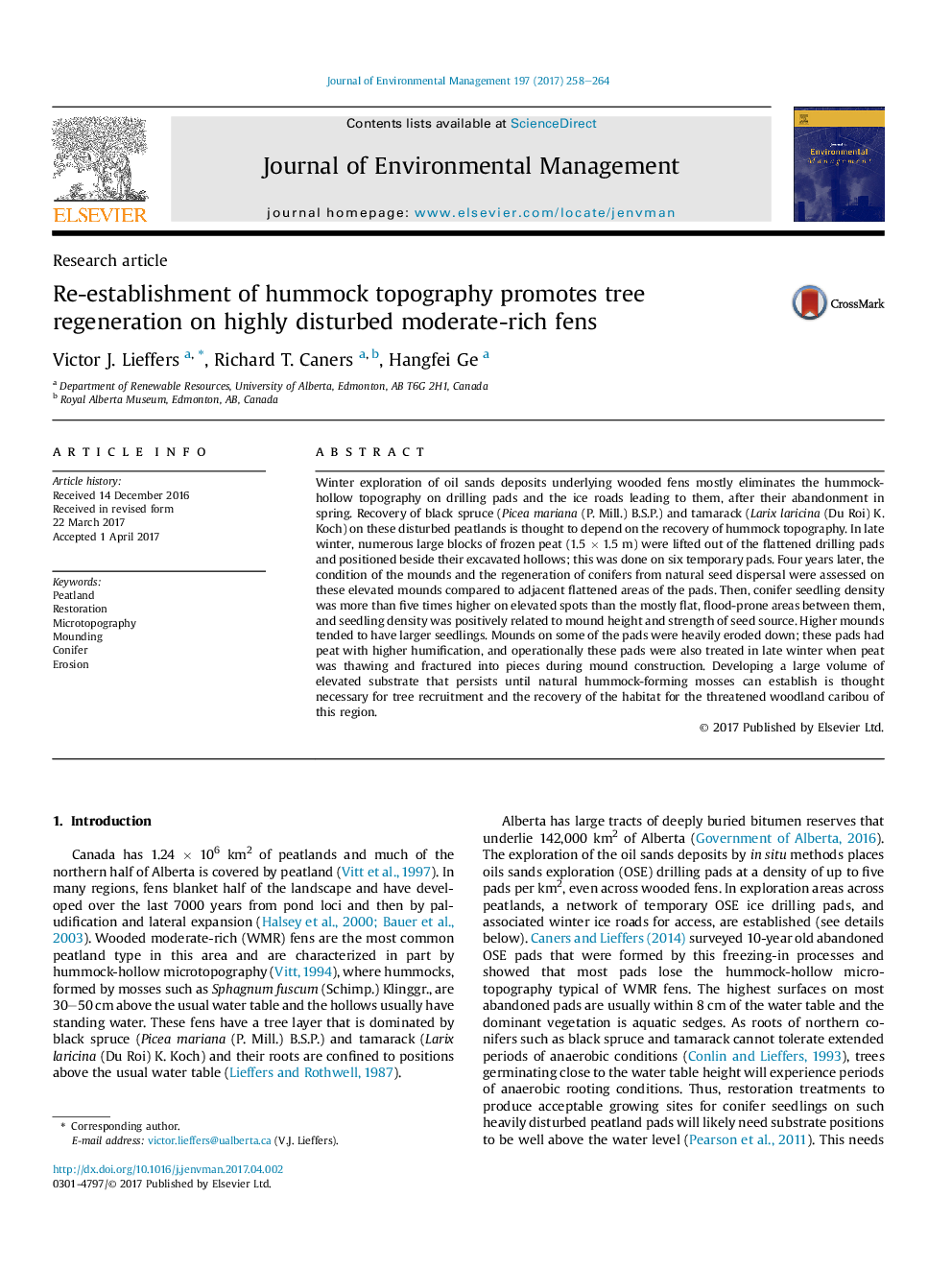| Article ID | Journal | Published Year | Pages | File Type |
|---|---|---|---|---|
| 5116952 | Journal of Environmental Management | 2017 | 7 Pages |
Abstract
Winter exploration of oil sands deposits underlying wooded fens mostly eliminates the hummock-hollow topography on drilling pads and the ice roads leading to them, after their abandonment in spring. Recovery of black spruce (Picea mariana (P. Mill.) B.S.P.) and tamarack (Larix laricina (Du Roi) K. Koch) on these disturbed peatlands is thought to depend on the recovery of hummock topography. In late winter, numerous large blocks of frozen peat (1.5Â ÃÂ 1.5Â m) were lifted out of the flattened drilling pads and positioned beside their excavated hollows; this was done on six temporary pads. Four years later, the condition of the mounds and the regeneration of conifers from natural seed dispersal were assessed on these elevated mounds compared to adjacent flattened areas of the pads. Then, conifer seedling density was more than five times higher on elevated spots than the mostly flat, flood-prone areas between them, and seedling density was positively related to mound height and strength of seed source. Higher mounds tended to have larger seedlings. Mounds on some of the pads were heavily eroded down; these pads had peat with higher humification, and operationally these pads were also treated in late winter when peat was thawing and fractured into pieces during mound construction. Developing a large volume of elevated substrate that persists until natural hummock-forming mosses can establish is thought necessary for tree recruitment and the recovery of the habitat for the threatened woodland caribou of this region.
Related Topics
Physical Sciences and Engineering
Energy
Renewable Energy, Sustainability and the Environment
Authors
Victor J. Lieffers, Richard T. Caners, Hangfei Ge,
